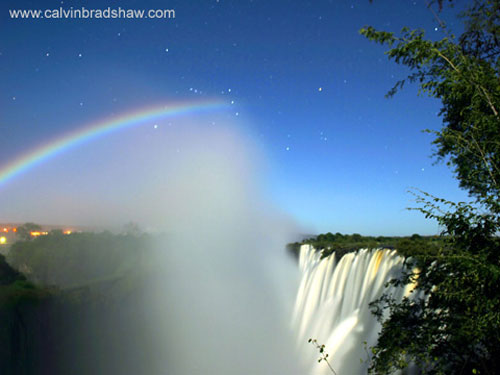While rainbows have managed to create an iconic place for themselves in the public imagination, “moonbows” haven’t been as lucky.
Vagabondish is reader-supported. When you buy through links on our site, we may earn a small affiliate commission. Read our disclosure.
No pot of gold to be found at the end of one, and chances are kids at schools don’t include one in their nature drawings. So what exactly is a moonbow? Well, it’s exactly that: a bow formed by the moon. Also known by the rather unromantic name of “lunar bow”, moonbows are formed on the opposite side of the moon, and very often seem white to our eye. This is because the brightness of the moon does not allow the cone receptors in our eyes to properly register the colors as they do with a rainbow.

You’ll have to wait for the right weather conditions to catch a moonbow. For, unlike rainbows which are a relatively common phenomenon, a moonbow is most clearly visible on a full moon-lit night when the moon is at its brightest, and when there is rain falling on the opposite side. The sky must be pitch black and the moon must be positioned lower to the ground.
Such precise weather requirements ensure that there are few places on the planet where you can actually witness the beauty of a moonbow. Waimea, Hawaii and Victoria Falls are known for their frequent moonbow occurrences, while Yosemite National Park too experiences many of these natural miracles because of the numerous waterfalls in the region.

